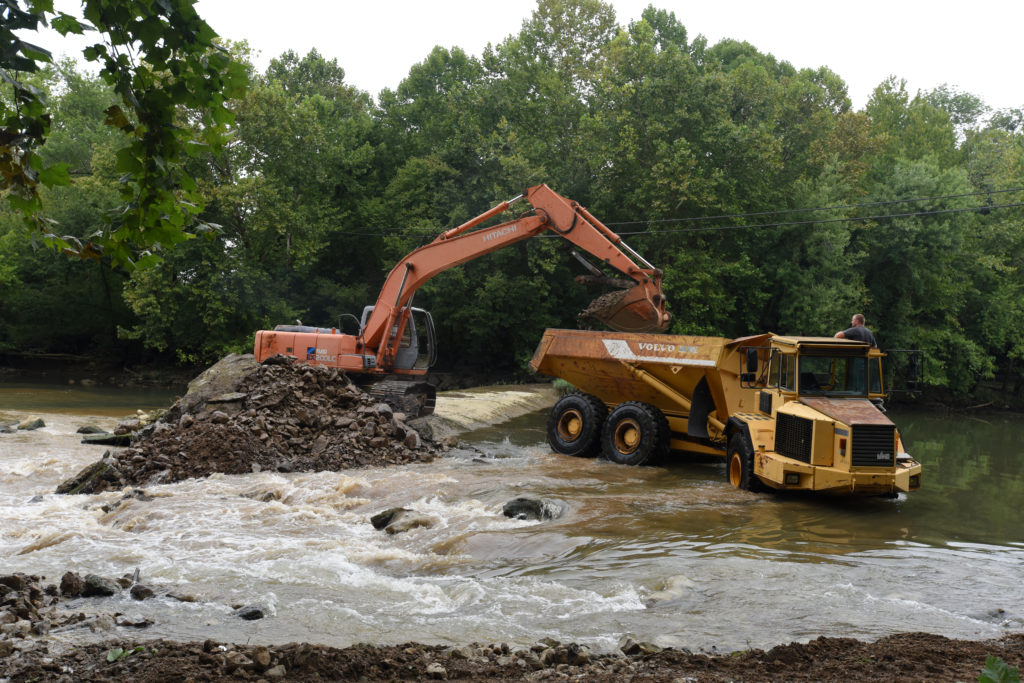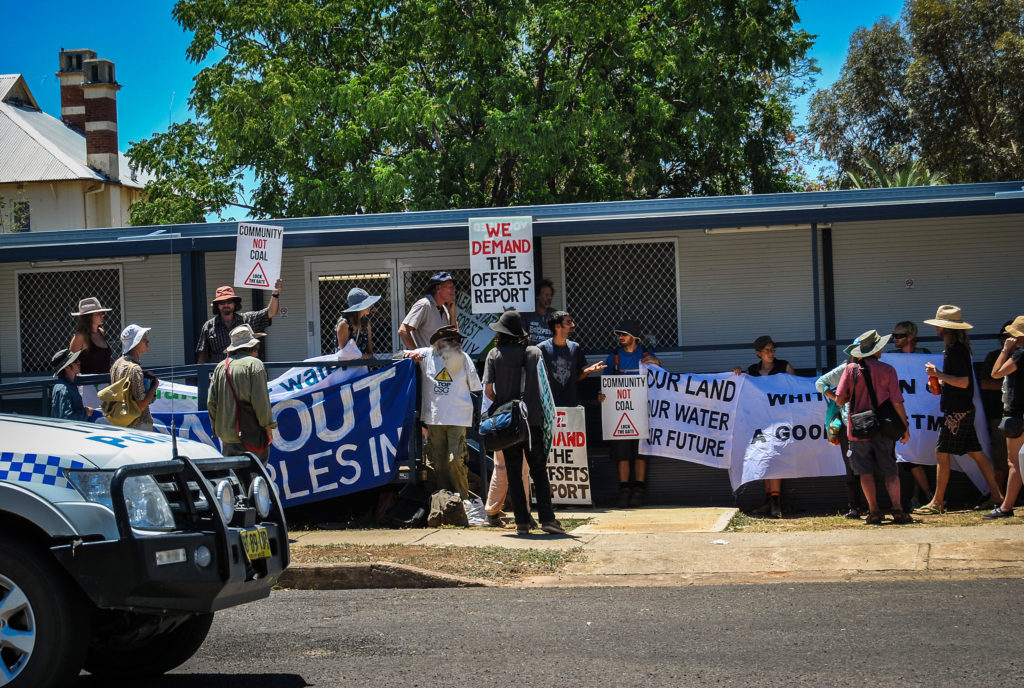By Niak Sian Koh (Stockholm Resilience Centre, Sweden) and Amos Ochieng (Department of Forestry, Biodiversity and Tourism, Makerere University, Uganda)
In an attempt to address the crucial problem of biodiversity loss, governments, conservation NGOs and the private sector are experimenting with different approaches to increase sources of funding for conservation. On a global level, the Convention on Biological Diversity (an international treaty for conserving biodiversity, signed by a majority of the world’s governments) has recommended certain ‘innovative financing mechanisms’ to mobilize resources for conservation from the private sector. However, concerns exist over potential social and environmental problems that may arise from the use of these mechanisms. On a governmental level, the Uganda Wildlife Authority (a government agency mandated to manage all conservation areas in Uganda) grants concessions to private sport-hunting companies to conduct sport hunting in and around some protected areas. The benefits that accrue are supposed to be shared with the local communities, based on the agreed terms and conditions, as stipulated in the concession agreements.
The rise of private sector involvement in conservation around the world has resulted in some controversial environmental policies that are, paradoxically, destruction-prone – permitting biodiversity losses to help finance other conservation activities. How can we ensure that funding for conservation policies are environmentally and socially sustainable?
In May 2018, we joined 40 other participants from 25 countries around the world to attend the STEPS Summer School. We were introduced to (alternative) pathways to sustainability. In a presentation by Amber Huff, we were drawn to the realisation that we are in an era of ‘resource politics’, where politics is influencing access to land use and control of natural resources.

This resonated with the work that we are undertaking for our PhD studies, regarding two provocative methods of biodiversity conservation: sport hunting and biodiversity offsetting. Sport hunting involves a tourist paying money to gain permission to hunt and kill an animal for leisure. Biodiversity offsetting requires the project developer to compensate for the destruction of a particular ecosystem by funding conservation of a similar one.
We view each of our fields of study as one pathway to address biodiversity loss, a vital environmental challenge of our time. Policies for sport hunting and biodiversity offsetting have the potential to increase conservation funding significantly by leveraging finances from the private sector. Ideally, private sector financing should complement, not crowd out, the public budget for conservation. Nonetheless, if implemented poorly, these policies can also accelerate biodiversity losses dramatically by permitting environmentally destructive activities. The use of these policies also has social implications on issues of land use and access to natural resources.
In this blog post, we introduce and examine two biodiversity conservation policies: sport hunting and biodiversity offsets through the ‘lens of pathways to sustainability’. We reflect on them as different but similar pathways to address biodiversity losses, and identify key issues to consider if these conservation policies are to be implemented with positive outcomes, both for people and nature.
The sport-hunting debate
Sport hunting (also known as ‘trophy’ hunting, ‘game’ hunting, ‘safari’ hunting or ‘conservation’ hunting) is being practised mainly in Southern and Eastern Africa, with the hopes of achieving both conservation and rural development objectives. Attitudes towards the practice of sport hunting are polarised in policy, academic and media debates.
Proponents of sport hunting (who are mainly hunters or pragmatic conservationists) promote it in the context of market-based and community-based conservation approaches to support rural development. Market-based conservation approaches are about ‘selling nature to raise money to enable governments to save it’. Community-based conservation approaches are about integrating the local communities with conservation activities, achieving participation and participatory local development.

Scholars such as Vernon R. Booth, and Lindsey, Roulet and Romanach estimate that these approaches together generate 201 million US Dollars annually in Zimbabwe, Zambia, South Africa, Namibia, Botswana, Mozambique, Ethiopia and Tanzania, as well as some West and Central African countries. Proponents of sport hunting highlight that this money is helping to fund conservation activities and promote improved rural livelihoods.
Opponents, such as Hampton and Teh‐White, as well as Batavia and colleagues, argue that sport hunting has negative consequences on ethical, ecological, animal rights and welfare grounds. Animal and environmental ethicists question the moral acceptability of killing some animals for the sake of saving others. Other critics are concerned for the ecological impacts of sport hunting on the population of the hunted species. Proponents of animal rights focus on understanding the rights of animals based on the principle of the sanctity of life. The animal welfare argument made by Wallach and colleagues is concerned for the fair conditions or treatment of the (hunted) animals.
The politics of sport-hunting policies: who benefits?
Policy decisions regarding sport hunting in Africa are varied. In Kenya, it was banned in 1977, and Botswana also banned it in 2014. Despite such contestation surrounding sport hunting, Uganda reintroduced it in 2001, lifting a 1979 ban on hunting, with the aim of addressing human-wildlife conflicts. A recently published PhD study by Amos Ochieng, from Wageningen University, shows that the Ugandan government received 130,566 US Dollars — a percentage share of the sport-hunting income from a private company around Lake Mburo National Park. This money was supposed to be used to fund conservation activities in the area, between 2001—2016. Tracing how much of this money was actually used to fund conservation activities in the area proved to be difficult because of the unreliability and irregularity in the recording and storage of data. Booth and Baker highlighted several inconsistencies in sport-hunting data sets in Southern and Eastern African countries. This raises serious queries concerning the practice of sport hunting as a pathway to sustainable conservation. Another concern is for the livelihoods of local communities, who are often denied the opportunity to practice traditional hunting because the animal species are protected for the interest of foreign, wealthy sport hunters, who pay hundreds of thousands of dollars to gain access to hunting fields, under the assumption that part of the income from the killed animal will be used to fund conservation.
The biodiversity offset debate
Branching off from the concept of ‘carbon offsets’ (which is debated in its own right), biodiversity offsetting has been encouraged by top-down policies through the Convention on Biological Diversity, the European Commission, national governments and global financial institutions. This has led to compensation policies taking place in at least 33 countries, with the US, Germany, Australia and South Africa having some of the most well-established offset policies for impacts on habitats and species.

At its best, biodiversity offsets provide a source of private conservation funding that ties conservation actions directly to impacts from infrastructure projects. Biodiversity offset policies cumulatively protect 8.3 million hectares of land worldwide with an estimated 4.8 billion US dollars of transactions in 2016 alone. In countries that lack mandatory offsetting requirements, companies have taken to conducting offsets voluntarily as a pre-emptive measure. This is most common with extractive industries operating in the Global South, which rely on technical guidance from external experts and environmental non-governmental organisations to implement. According to established policy guidelines in the industry, offsetting must only be considered as a last resort, after all efforts have been taken to apply the mitigation hierarchy: avoiding, minimizing, or restoring on-site before offsetting elsewhere. Nevertheless, this is easier said than done.
Biodiversity offsetting projects are wrought with technical difficulties in measuring biodiversity. They have been criticised for being unsuccessful in meeting ecological goals, and risking a ‘license-to-trash’, if an offset project leads to authorities approving a development project they would not have otherwise. The social outcomes are also challenging. Communities can lose access to nature and livelihoods if biodiversity losses in one place are compensated far away, or if access to compensation land is restricted. This has especially dire consequences for communities that are dependent on forest resources for their main source of food and livelihoods, who tend to have high rates of poverty.
Lack of accountability
The similarities of these two environmental policies highlight certain controversial elements of biodiversity conservation and the resource politics they entail. Both policies are associated with a lack of accountability for tangible conservation outcomes. In sport hunting, one huge challenge is the transparency and availability of reliable and credible data on the number of animals being hunted, the rate of individual species recovery, or even the number of animals being poached under the pretense of being officially hunted through sport hunting. The absence of such vital information leads to a ‘blind implementation’ of the policy that will likely have long-term effects on the population of individual wildlife species.
In biodiversity offsetting, conservation efforts often consist of either increasing protected areas or conducting ecological restoration activities. The latter has a higher risk, as restoring ecosystems tend to occur over time scales spanning years. If an offset via restoration fails, the conservation shortcomings would only be realised several years into the future, whereas the environmental damages from the infrastructure project is permitted in the present today. Will the developer be held accountable in the future if the offset doesn’t achieve its ecological goals? Only time will tell.
Market-influenced nature conservation
Both these conservation approaches can be influenced by the market, with the private sector as one of the main operators. In sport hunting, the private hunting companies are issued concessions to operate hunting based on a set quota in a specific location. The company is then responsible for marketing and attracting hunters to their lands. Around Lake Mburo National Park for example, Ochieng and colleagues found that the price that the hunters pay to kill an animal is shared as follows: government 10 percent, landowners 50 percent and the community wildlife association 40 percent. The government is supposed to reinvest its percentage directly into conserving the values of an ecosystem for the long term. The money received by the community association is used to fund community development projects, while the landowner’s percentage is used to meet individual household needs.

In biodiversity offsetting, a recent study by Koh and colleagues at the Stockholm Resilience Centre demonstrates that various degrees of market involvement (or no market at all) are possible when designing offset policies. Wetland mitigation banking in the US is one of the most widely known policies and is one example of high market involvement in conservation. Privately owned wetland banks acquire rights to land, conduct conservation actions, quantify their actions into ‘wetland credits’ and sell these credits to developers looking to meet their compensation requirements. Wetland banks in Florida are estimated to make a 10 to 15 percent return within 5 to 6 years. Scholars argue that market-driven offsets in the US have facilitated an urban-rural migration of wetlands; from publically accessible urban areas where development often happens, to less-populated, privately managed rural areas where acquiring land rights tends to be cheaper.
Biodiversity is a public good; in both cases, the ‘buyers and sellers’ of nature have reasons to embellish their conservation gains and underestimate the biodiversity losses. Hence, both these tools require significant government regulation in the monitoring process to ensure good outcomes. Biodiversity hotspots tend to coincide with lower-income countries and vague governance structures. If exclusionary conservation approaches are used in these policies, where people lose access to nature and their livelihoods, communities in countries with weaker governance structures may have limited capacity to protest. This highlights the unforeseen social risks involved with the use of neoliberal conservation policies, where only those with the financial means can afford to pay for accessing biodiversity.
Despite the continued piloting of these instruments, their outcomes remain questionable. Both these policies, paradoxically, perpetuate the continuous destruction of nature on the grounds of conserving it. This raises questions of whether the ends justify the means. How do we know that these instruments actually create conservation gains instead of encouraging further biodiversity loss? Should we be trying to improve the implementation problems of these tools, or are their outcomes so uncertain and risky that we shouldn’t be using them at all? What are the kinds of resource politics or contestations surrounding these resources? How are people affected by these policies and will they be compensated for their loss of livelihoods? What are the associated trade-offs? These questions must be considered before zeroing in on any particular instrument in the interest of nature conservation.
Pathways for nature conservation require careful management
In conclusion, the STEPS pathways approach recognises the plurality of tools to transition to a more sustainable society. The instruments we present here are just two examples of pathways for conservation. Currently, the advocates of these instruments struggle to justify their conservation outcomes, since accountability and transparency are so difficult to achieve in both cases. If poorly implemented, there is a risk that these approaches create perverse incentives for biodiversity conservation and end up accelerating biodiversity losses. Private-sector funds may be a valuable, untapped resource for conservation, but this doesn’t mean the rest of us can drop the ball and leave the challenge of biodiversity loss for businesses to solve. Governments need to prioritise strong enforcement mechanisms for market-influenced conservation policies. Local communities must have opportunities for effective participation in the policy (re)design process to ensure their voices and concerns are heard. Researchers and NGOs should be involved in the implementation and monitoring of these approaches to examine the conditions required for such tools to be used appropriately. Even with private sector-financed conservation approaches, we all still have a role to play in ensuring positive outcomes for both people and nature.
